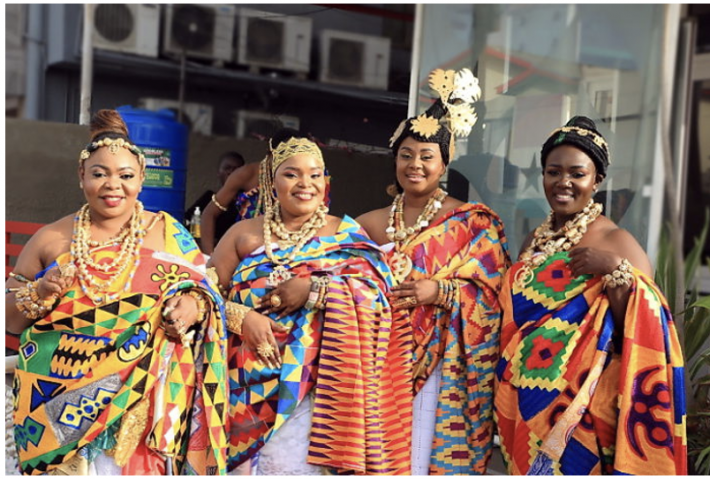As a girl with Italian-Ghanaian heritage growing up in Europe, I have experienced first-hand the harmful stereotypes and misconceptions surrounding Africa. It’s disheartening to see how many people are uneducated about the continent’s rich cultural history and how media coverage often perpetuates negative narratives that focus on slavery and pain. However, it’s important to recognise that Africa has a diverse and extensive history beyond colonisation. As the birthplace of humanity, the continent has made significant contributions to fields such as language, mathematics, art, medicine, and more. As an Akan, I’m passionate about sharing the beauty of my culture and educating others about its rich history.
The Akan people are found in parts of Ghana, the Ivory Coast, and, to a lesser extent, Togo. They primarily live in Southern Ghana and the western part of Ivory Coast. As of 2022, the Akan accounted for almost 50% of Ghana’s population. It is important to acknowledge that in one African country, there are numerous ethnic groups, languages, dances and so on. So, being “Ghanaian” doesn’t technically exist because I belong to a certain ethnic group, and other people living in the land are from different ethnic groups. Countries and borders were created during the colonial era. The Akan people are made up of eight Abusua (matrilineal) clans, which include the Agona, Asakyuiri, Asenie, Asona, Oyoko, Tena-Bretuo, and the Ekuona people. The Akan also consists of different subgroups, which comprise the Asante, Adanse, Agona, Akuapem, Bono, Fante/Fanti, Nzema, and many others. I am Fante/Fanti. The Akans are a matrilineal society, and women inherit lands or success from their own mother’s family.
The Akans migrated from the region of Egypt (Nubia-Kushite Empire) to Niger-Sudan to the Akana (Ghana) Empire which is modern-day Mali-Mauritania, Senegambia. Nearly 1000 years later, the Ghana Empire was invaded by Muslim Groups. Because the place was deteriorating, the Akans were against the religion of Islam, and it brought the Islamic military government into the Sahara Desert. Because of the invasion and forced imposition of Islam (Almoravid) and lack of lands, my ancestors had no choice but to move from Sikassou in modern-day Mali to Gonja, which is modern-day Northern Ghana, along the banks of the river Tano. They then migrated to southern Ghana, where they established Kingdoms.
Wealth of the Akans
The Akan people were a very powerful group that gained most of their prosperity through the abundant gold they had in their land. Not only did it bring prosperity to the people, but it also brought trade to the region and fuelled the rise of kingdoms such as Asante, Denkyira, Adanse and Bono. Gold was the symbol of power for the Akan kingdoms during their formation, and it was the Akan currency. It was considered the earthly counterpart to the sun and the material embodiment of life force (kra). Because it is associated with the sun in Akan worship, it is a symbol of divine energy and wealth. Ghana was called “Gold Coast” during colonisation, and this is because Europeans were attracted to the enormous mineral wealth. In the 1470’s Portuguese explorers arrived in Ghana, and by the 1500’s they built a castle in Elmina and they were exporting over 570 kg of gold. Ghana is now rich in mineral resources such as gold, diamonds, iron ore, manganese, bauxite, limestone, and other minerals.
British colonial forces stole many gold and silver artefacts from the Asante Kingdom over 100 years ago. As of January 2024, the United Kingdom will return gold and silver artefacts to Ghana under a loan arrangement, and they should just be returned to Ghana as they belong there.
Kente
Kente cloth, a dazzling and intricate fabric, is a cherished handwoven textile derived from silk and cotton and originating from the Akan group. This cloth is reserved for esteemed members of society and royalty, who don it for momentous occasions. The patterns on the cloth are rich in cultural significance and are imbued with deep historical, ethical, religious, and philosophical meaning. The vibrant hues of red, green, and yellow that adorn this traditional fabric each possess their own symbolic significance. The Ashanti people, in particular, hold Kente cloth in high regard, wearing it with pride during pivotal moments such as weddings, graduations, funerals, ceremonies, and religious worship.
I am very proud of my heritage. We have a very long, impressive history that goes back at least 12000 years, and my culture is beautiful. I am happy to share different aspects of my ethnic group outside of slavery. Some core elements of the Akan culture have been lost due to migration and outsider influence, but for the most part, the core fundamentals have remained the same.
Victoria Bartels
